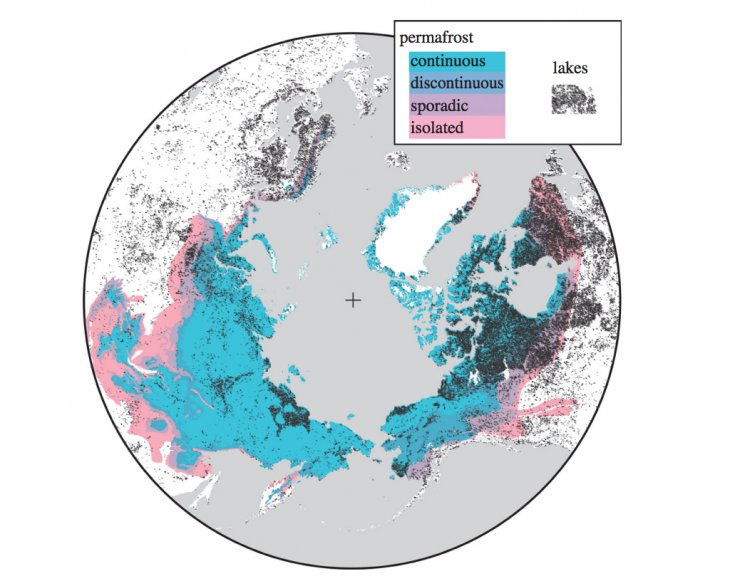Global climate change is one of the most important issues facing modern society.
Global mean surface air temperatures have increased approximately 0.68C over
the past century resulting in the retreat of glaciers, thawing of permafrost and
sea ice, increase in river discharge and alteration of terrestrial and aquatic
ecosystems in ways that demand both immediate and long-term societal response
(Overpeck et al. 1997; IPCC 2001; Peterson et al. 2002; Romanovsky et al. 2002;
ACIA 2004; Hinzman et al. 2005; Stern Review 2006).
Projections suggest even greater warming resulting from rising greenhouse gas
concentrations over the twenty-first century (IPCC 2001, forthcoming).
Methane (CH4) is the third most important greenhouse gas in the atmosphere after
carbon dioxide (CO2) and water vapour, and it is arguably the most dynamic. During
the last glacial period, the concentration of atmospheric CH4 rose and fell by 50% in
association with rapid climate warming (Brooket al. 2000;Dallenbachet al. 2000). It
has increased by approximately 250% since the pre-industrial era, exceeding the rate
of CO2 increase by 120% (IPCC 2001). Numerous recent works suggest that significant
new sources of atmospheric CH4 are still being identified.
Warm temperatures from 1989 to 1998 led to the thaw of massive ice
wedges that had been stable for thousands of years in northern Alaska, Russian Tundra
and especially Northern Mongolia, thus exposing unprotected permafrost to the atmosphere,
which in turn emits catastrophic amounts of methane.
The focus of this study is to identify and emphasize the undeniable growth
of methane emissions in Mongolia, compared and contrasted with CO2 emissions in the same area.
The sample data has been taken from :
ftp://aftp.cmdl.noaa.gov/data/trace_gases/ch4/flask/surface/ch4_uum_surface-flask_1_ccgg_month.txt
ftp://aftp.cmdl.noaa.gov/data/trace_gases/co2/flask/surface/co2_uum_surface-flask_1_ccgg_month.txt
CO2 vs Methane Emissions in Mongolia between 1992-2012
REFERENCES
Brook, E. J., Harder, S., Severinghaus, J., Steig, E. J. & Sucher, C. M. 2000 On the origin and
timing of rapid changes in atmospheric methane during the last glacial period. Global
Biogeochem. Cycles 14, 559–572. (doi:10.1029/1999GB001182)
Dallenbach, A., Blunier, T., Fluckiger, J. & Stauffer, B. 2000 Changes in the atmospheric CH4
gradient between Greenland and Antarctica during the Last Glacial and the transition to the
Holocene. Geophys. Res. Lett. 27, 1005–1008. (doi:10.1029/1999GL010873)
Overpeck, J. T. et al. 1997 Arctic and environmental change of the last four centuries. Science 278,
1251–1256. (doi:10.1126/science.278.5341.1251)
Peterson, B. J., Holmes, R. M., McClelland, J. W., Vorosmarty, C. J., Lammers, R. B.,
Shiklomanov, A. I. & Rahmstorf, S. 2002 Increasing river discharge to the Arctic Ocean.
Science 298, 2171–2173. (doi:10.1126/science.1077445)


